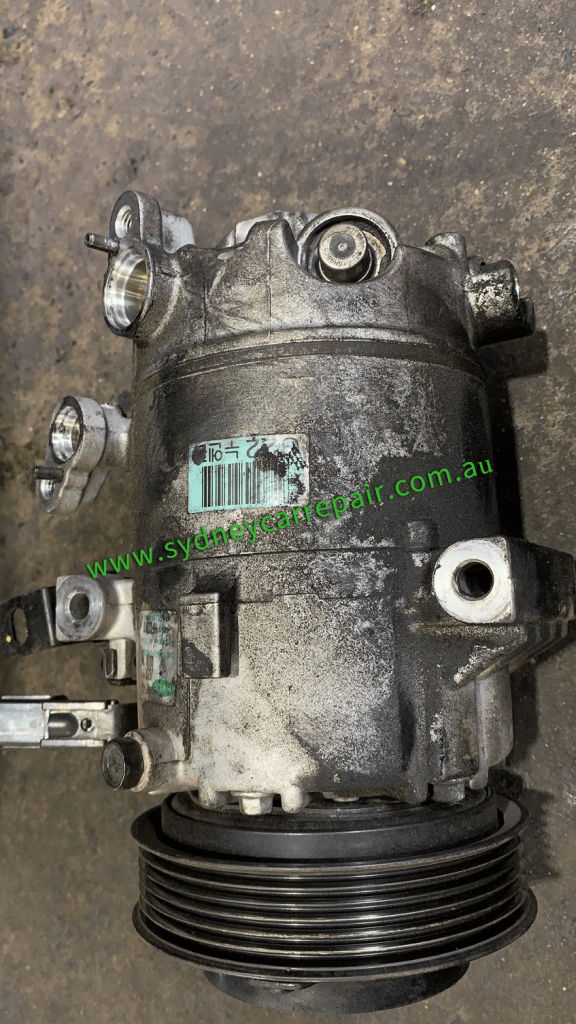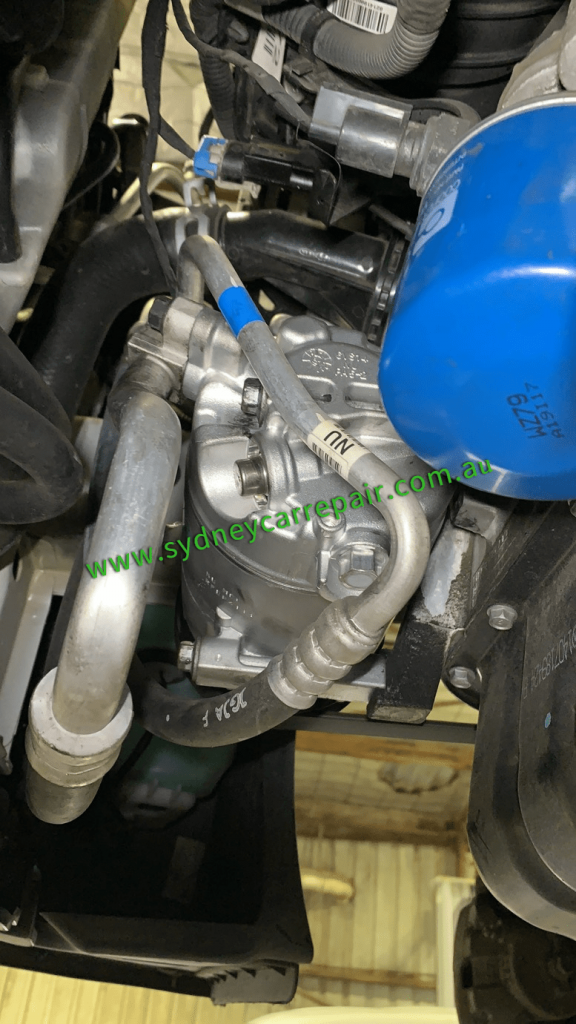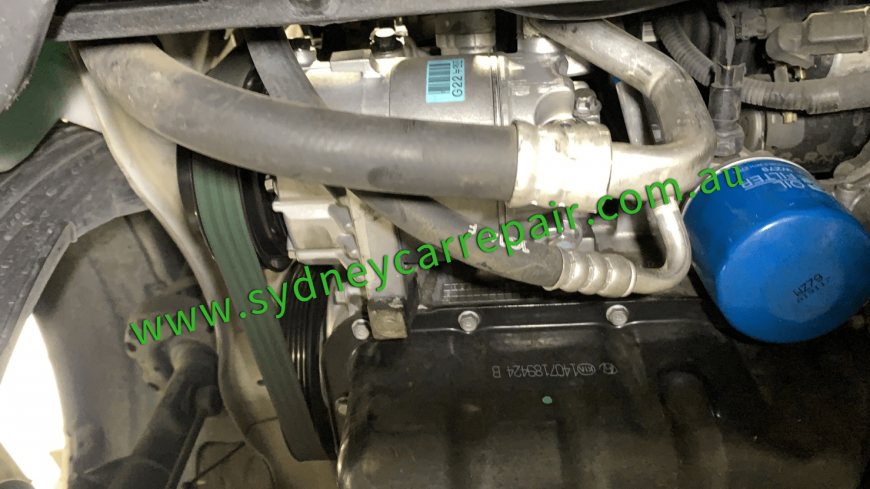Is your car’s AC system in need of repairs?
If your car’s AC system hasn’t been up to scratch recently, there may be a failed part such as the compressor. As the only moving component aside from the TX valve, the compressor is more vulnerable to wear and tear. It is also the most important part of the system.
The compressor is responsible for pumping refrigerant through to each of the other components and is driven by a belt and pulley system attached to the engine. If it fails, it will not only prevent your AC from working but it may also damage other components. This is known as contamination, where particles from the compressor travel with the refrigerant oil mixture and settle throughout the system.
Think something might be wrong with your compressor? Talk to your nearest Cooling Specialist at Sydney Car Repair workshops.
What is an AC compressor?
At the basic level, an AC compressor is a mechanical pump. It pressurises and circulates the refrigerant in your car’s AC system.
In turn, the rest of your AC system enables that refrigerant to cool the air that enters your car, but it all starts with the compressor.
An electrically-activated clutch on the compressor engages when the system detects lowering pressure. Inside the AC compressor, two pistons attached to a wobble plate pump the low-pressure refrigerant entering the compressor into the high-pressure side.
This cycle continues as long as the AC system is activated or the defogger is turned on.
A small amount of oil is required to lubricate the moving components.
The clutch mechanism utilises a bearing that can fail as well.
And if one of the seals or internal parts in the AC compressor develops a flaw, the compressor won’t function as it should or not at all, and will need to be replaced.

Signs and symptoms of failure
Not sure what your AC troubles mean? It might be the compressor. Have any of these occurred when you tried to use the AC?
Weird noises: could be caused by worn or broken belts/pulleys. This could be related to several other issues that need to be addressed promptly.
Smell of burning: likely the wiring of compressor is damaged or burnt.
Leaking dashboard: clogged hose or drain could be to blame. Age and moisture can also cause system leaks.
The above symptoms indicate a severe problem in the system and should be fixed as quickly as possible.
How much do AC compressors cost?
If you’ve established a failed compressor as the cause of your AC issues, you might be wondering how much it costs to replace. The price is dependent on a lot of different factors which we will outline below:
Extent of the issue: if the damage has spread to other components that cannot be effectively cleaned, they will need to be replaced too.
Make and model: part prices vary for each individual car. A Sydney Car Repair workshop will be able to provide detailed quotes on specific part pricing for you.
Labour and repairs: there is more to consider than just the cost of a replacement part. When replacing a compressor it may be necessary to regas the system and replace other parts too. The labour costs of this job will also be factored in.

We can’t definitively name a price for any one car unless it has been inspected. Sydney Car Repair workshops can provide a thorough inspection and diagnosis of any AC system issues. If the problem is the compressor, Sydney Car Repair technicians will be able to supply a quote for expected replacement and repair costs.
What to do next
Now that you know what to expect, you’ll need to decide on next steps. To make sure the problem is properly diagnosed, talk to Sydney Car Repair technician. We can advise what issues may be existing in your system and what repairs will be necessary. Pricing and repair costs will be supplied in a detailed quote.
SydneyCarRepair’s talented technicians are the cooling specialists and help find the right solution for your vehicle. Give Us a Call to Book Now
Tools You Need to complete work
Wrench set (including line wrenches)
Refrigerant
Socket set
Serpentine belt tensioner tool
Recovery machine for refrigerant
Vacuum pump
Hoses, gauges and thermometer
AC compressor
Receiver drier
How is AC compressor replacement performed?
- Locate the AC compressor and remove the serpentine belt from the compressor’s pulley. You may need a serpentine belt tool to work the tensioner and relieve pressure on the belt so you can take it off.
- You’ll need to evacuate the system’s refrigerant using a recovery machine. Recovery machines are specialized equipment that are limited to AC shops—you may need to take your vehicle in for this step before going any further.
- Remove the negative battery cable from its post.
- Remove the bolt at the compressor that secures the refrigerant lines and inspect the lines carefully for dirt or signs of wear.
- Disconnect the compressor’s electrical connections.
- Remove the compressor’s mounting bolts and pull the unit from the vehicle.
- Install the new compressor in reverse order. The warranty may also require you to change the orifice tube and receiver/dryer.
- Install and tighten the compressor-mounting bolts and hook up the electrical connectors.
- Replace the refrigerant tubes’ O-rings and lubricate with the proper oil.
- Reinstall the refrigerant lines and put the belt back on the pulley.
- Pull a vacuum through the system to eliminate any residual atmospheric air or moisture. You’ll need a vacuum pump and manifold gauges for this. There will be hoses that connect to the low side and high side of the system—these two connectors are different sizes, so there’s no way to get it wrong. The gauges’ yellow hose will then connect to the vacuum pump itself. Make sure all connections are completely airtight.
- Open the valve at the low side gauge while the pump is running—you will hear a change in the pump motor’s tone as it starts to pull vacuum. Let the pump run for about 30 minutes and close the valve; it should read about 28 to 29 inches of mercury. Anything less than that can indicate a serious leak in the system
- To charge the system once vacuum is achieved, reconnect the battery and connect the yellow hose to the refrigerant keg or can. Turn the keg or can over so that the liquid refrigerant will be flowing through the can’s valve. Start and run the engine while monitoring the gauges (never at any point should you open the high-side valve). Put a thermometer in the interior AC vent while running the system on max setting and high blower speed. When the system is cooling at 30 to 36 degrees, your AC is charged.
Looking for Car Repair and Car Inspection in Sydney? Give us (Sydney Car Repair) a call today to get FREE QUOTE.
All of our car servicing and car repair jobs are carried out by licenced vehicle technicians with years of extensive experience across all popular and luxury makes and models.
Our Address: 71 Atkins Road, Ermington, NSW 2115

Turn on Your Camera and Scan Me to add our contact detail to your phone.
If you are live in Eastwood, Carlingford, Ermington, and you need to have your car service and repair near me, car maintenance near me, car mechanic near me sydney you are welcome to visit our car mechanic shop to get it done. We do car servicing and car repair job for people for the Eastwood, Carlingford, Epping, Ryde, Ermington, and all the rest of Sydney, Australia. Mechanic near me car, repair near me, vehicle repair near me. Tyre repair near me, tyre replacement near me.
If you need mechanic near me or car repair or used car inspection near me, we can repair most of the following car’s and repair for you in sydney: TOYOTA, HONDA, BMW, BENZ, MINI, NISSAN, Mitsubishi, Subaru, Audi, Volkswagen, Hyundai, Ford, Holden, JEEP, tesla and many more。


